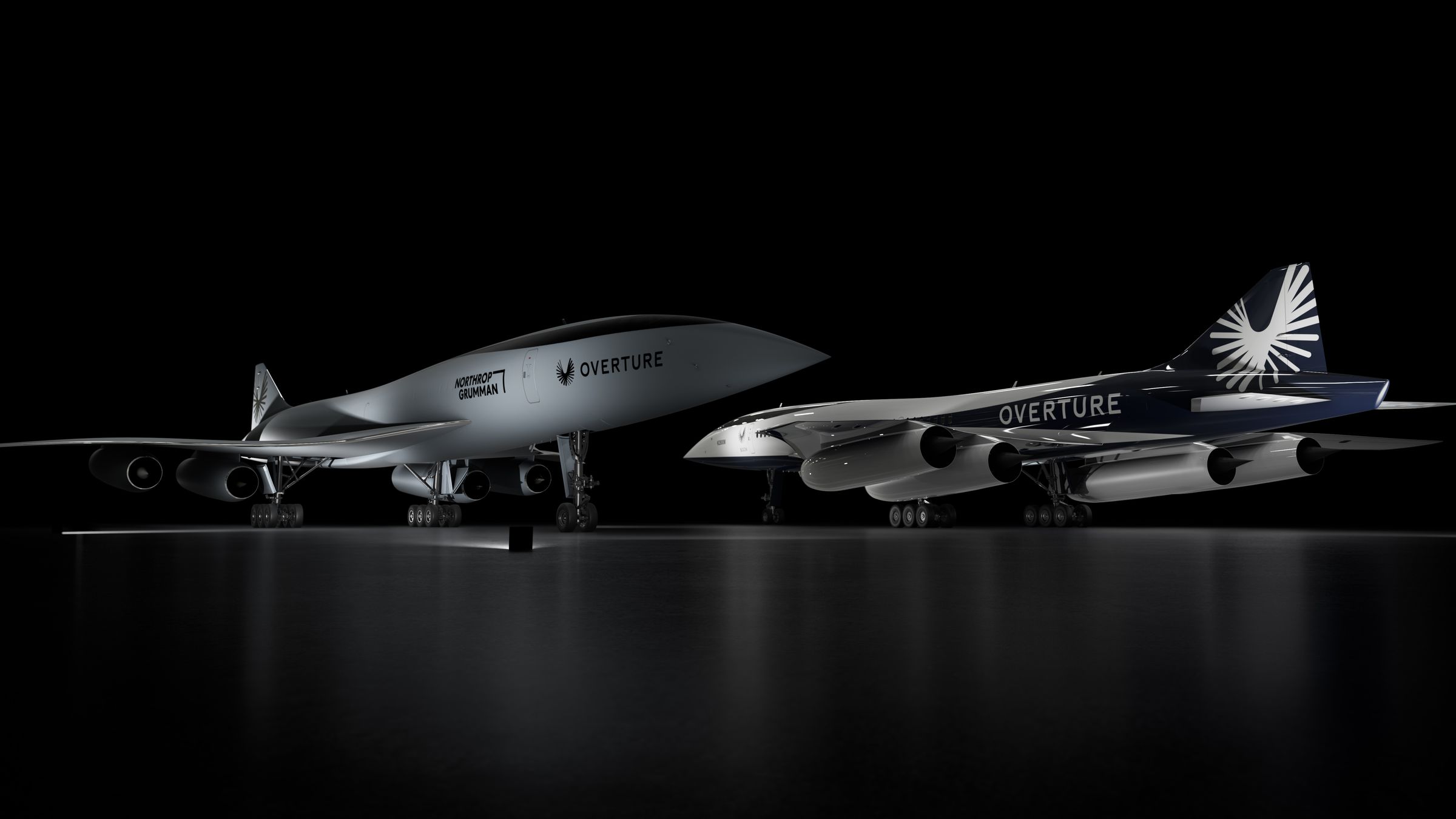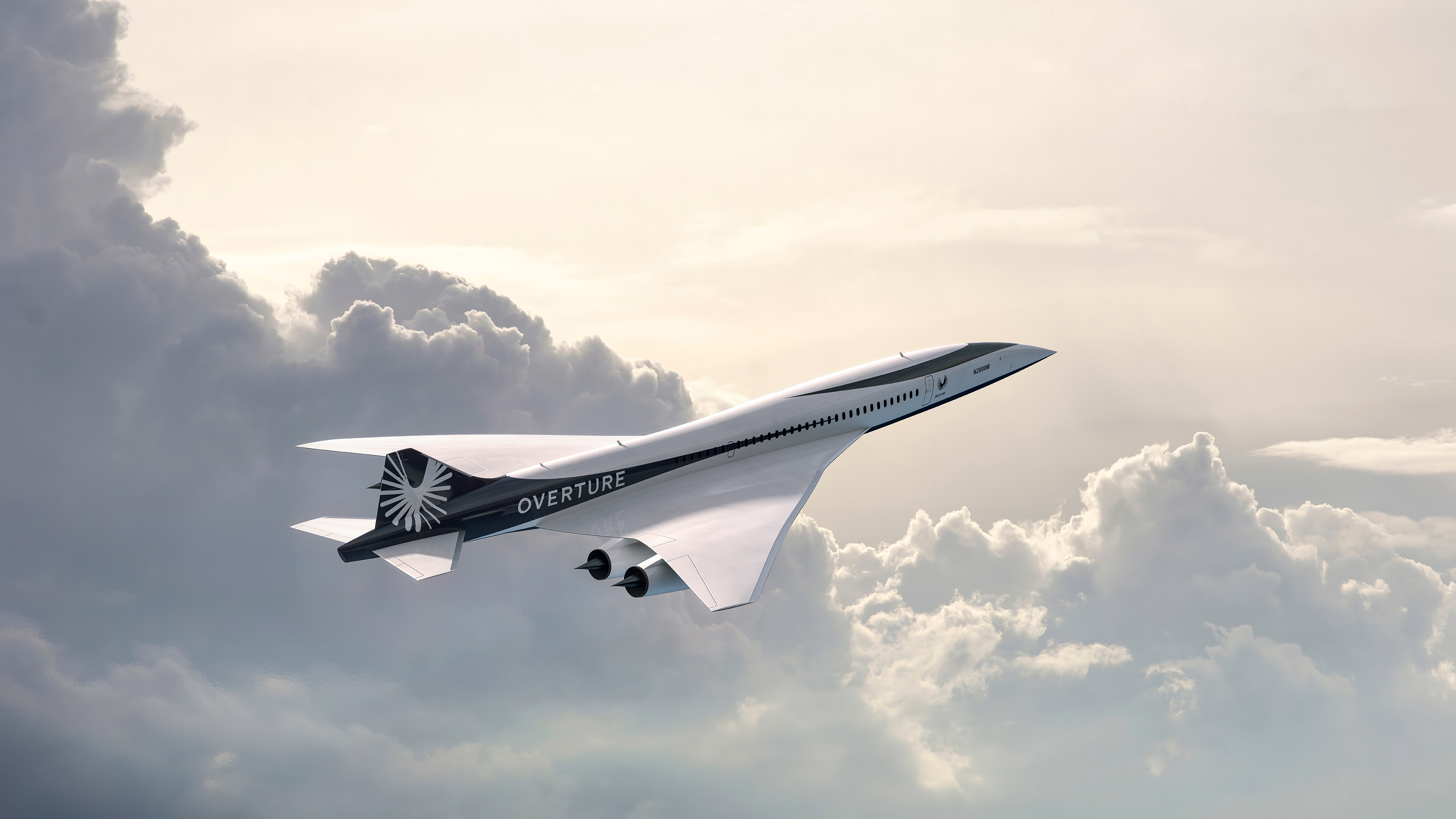Boom Supersonic and Northrop Grumman team up to build superfast US military aircraft
"Time is a strategic advantage in high consequence scenarios."

Boom Supersonic, which wants to fly passengers faster than the speed of sound, announced a collaboration with Northrop Grumman focused on government sales.
The partnership aims to create variants of Boom's supersonic "Overture" aircraft for military and emergency response, the companies announced in a statement Tuesday (July 19). Terms of the deal, including its value, were not disclosed.
Boom emphasized its so-far unproven fleet will be able to support vital missions at high speed, bringing passengers and equipment to critical locations faster than the speed of sound.
"Time is a strategic advantage in high consequence scenarios, from emergency evacuations to disaster response," Boom Founder and CEO Blake Scholl said in the statement.
Related: Supersonic! The 10 Fastest Military Airplanes
Northrop Grumman is a long-time supplier to the U.S. armed forces for spacecraft and military aviation systems. The partnership between the two firms will help ensure potential military or government customers can acquire Overture aircraft made for their specific needs. "Pairing Northrop Grumman’s airborne defense systems integration expertise with Boom’s state-of-the-art Overture supersonic aircraft makes perfect sense," Tom Jones, president of Northrop Grumman Aeronautics Systems, said in the statement. "Together we can ensure military variants of Overture are tailored for missions where advanced system capabilities and speed are critical."
Boom has pushed back plans to fly its test XB-1 jet after promising a date sometime in 2021. In May 2022, the company said in a media report from Simple Flying that it has completed 80% of its pre-flight testing.
Get the Space.com Newsletter
Breaking space news, the latest updates on rocket launches, skywatching events and more!

Even though Boom is still in pre-flight testing, the company already has multiple contracts, having signed a deal with United Airlines in 2021 to eventually fly passengers at supersonic speeds.
Once ready, Overture will send passengers from Paris to Montreal in only 3 hours and 45 minutes, about half the current metric of 7 hours and 15 minutes, according to Boom.
Boom's Overture aircraft features a tapered fuselage that has a larger diameter at its front than at its rear, a design the firm claims helps to minimize drag while optimizing fuel efficiency. Four wing-mounted engines propel Overture to speeds of over Mach 1.7 when flying over water and just under Mach 1 over land.
In addition, Boom claims that Overture's rear-swept gull wings offer the aircraft enhanced stability and safety at any speed. "Aviation has not seen a giant leap in decades. Overture is revolutionary in its design, and it will fundamentally change how we think about distance," Scholl said in the statement.
Boom isn't alone in working on supersonic jets. NASA is readying its experimental X-59 quiet supersonic transport jet for test flights, while Virgin Galactic also has unveiled plans for a new Mach 3 aircraft for supersonic passenger travel.
Follow Elizabeth Howell on Twitter @howellspace. Follow us on Twitter @Spacedotcom or Facebook.
Join our Space Forums to keep talking space on the latest missions, night sky and more! And if you have a news tip, correction or comment, let us know at: community@space.com.

Elizabeth Howell (she/her), Ph.D., was a staff writer in the spaceflight channel between 2022 and 2024 specializing in Canadian space news. She was contributing writer for Space.com for 10 years from 2012 to 2024. Elizabeth's reporting includes multiple exclusives with the White House, leading world coverage about a lost-and-found space tomato on the International Space Station, witnessing five human spaceflight launches on two continents, flying parabolic, working inside a spacesuit, and participating in a simulated Mars mission. Her latest book, "Why Am I Taller?" (ECW Press, 2022) is co-written with astronaut Dave Williams.









